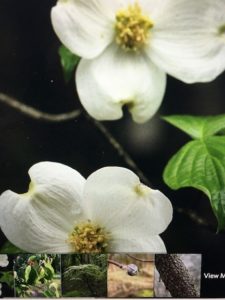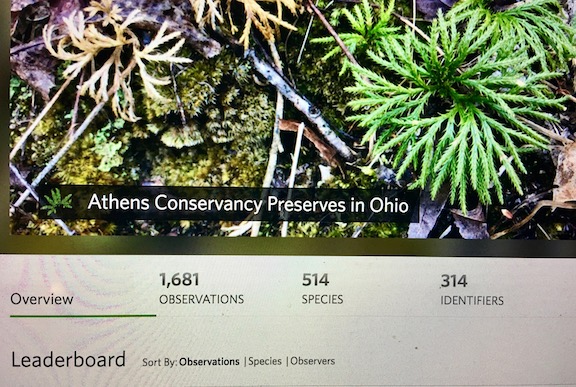The Conservancy and the Athens Nature Center initiative have built a dedicated iNaturalist project for Athens Conservancy Preserves.
It is easy to document living beings on your next walk. Install the iNaturalist app on your smartphone. You can watch a 1.5 min video on How to Make an Observation on iNaturalist.
 When you find an organism to report, (1) take a photo. I sometimes take a few pictures from different angles and distances. When I find a perched dragonfly or butterfly, I start shooting while slowly approaching. Later I select the best one.
When you find an organism to report, (1) take a photo. I sometimes take a few pictures from different angles and distances. When I find a perched dragonfly or butterfly, I start shooting while slowly approaching. Later I select the best one.
(2) Upload the photo right away, or wait until you have better web connectivity. Your phone photos should have geolocations embedded. iNaturalist uses machine learning to identify the organism on your photo. When tapping ‘What did you see?’, iNat comes up with suggestions. I am amazed how often these are accurate!
(3) Now, upload it by tapping the ‘Share’ button. Your observation shows up on your observations list (which you may view on the iNaturalist website).
After collecting observations for a while, some may have little flags next to them. That means a volunteer community expert has looked at them, either agreeing with the initial ID or suggesting a different one. With enough community expert support, your observations may ‘graduate’ from ‘Casual Grade’ to ‘Research Grade’, making them more valuable for the scientific community.
People are surprised at the diversity of living species found in the forests. In fact, the Eastern Deciduous Forest biome is one of the richest land ecosystems, almost rivalling tropical rainforests.
Explore the Athens Conservancy Preserves website on iNaturalist to get an idea: as many as 514 species (318 of them Research grade) have been found by 95 observers! Most are plants (280 species), followed by fungi (73), birds (40) and insects (36). There is much out there to discover!
Please email us with questions and suggestions.
–Stefan Gleissberg

